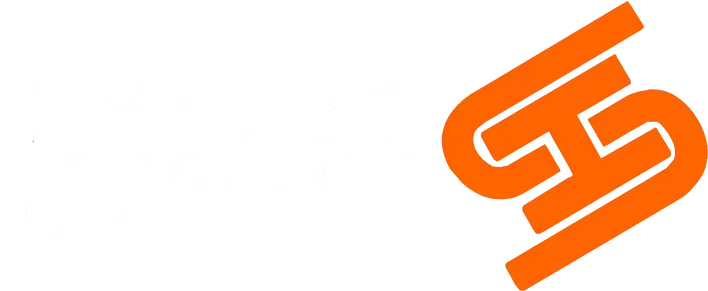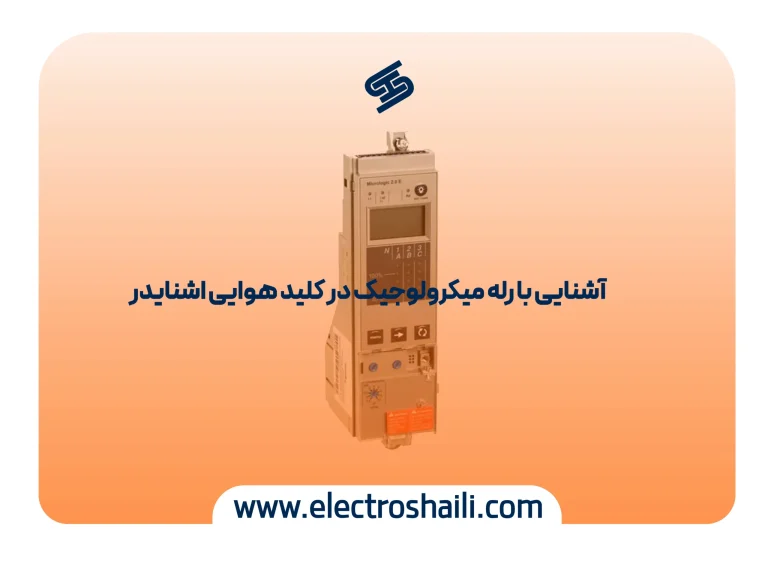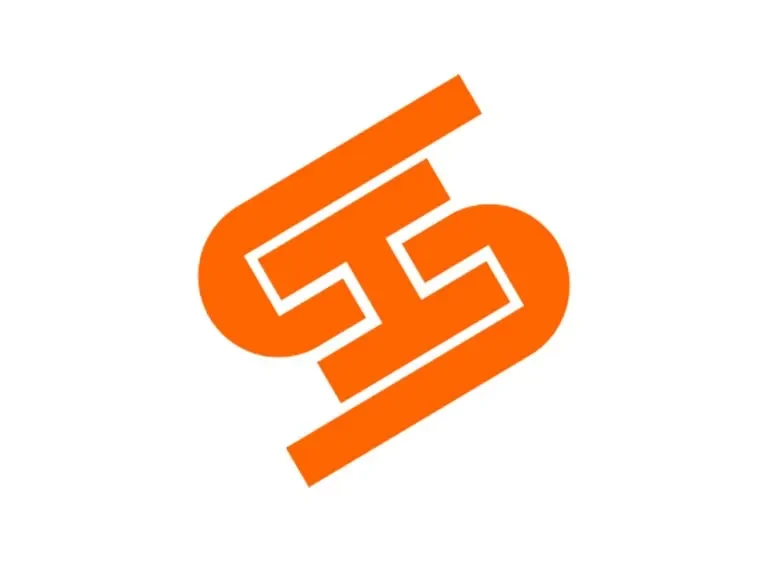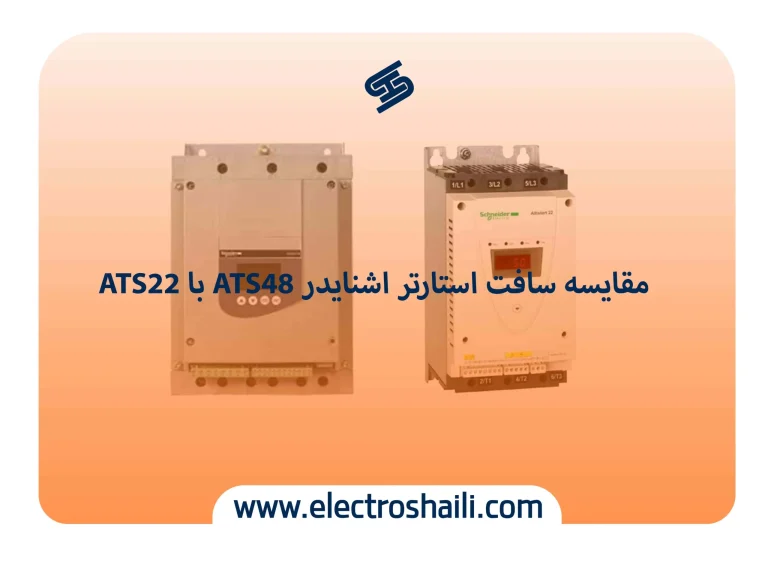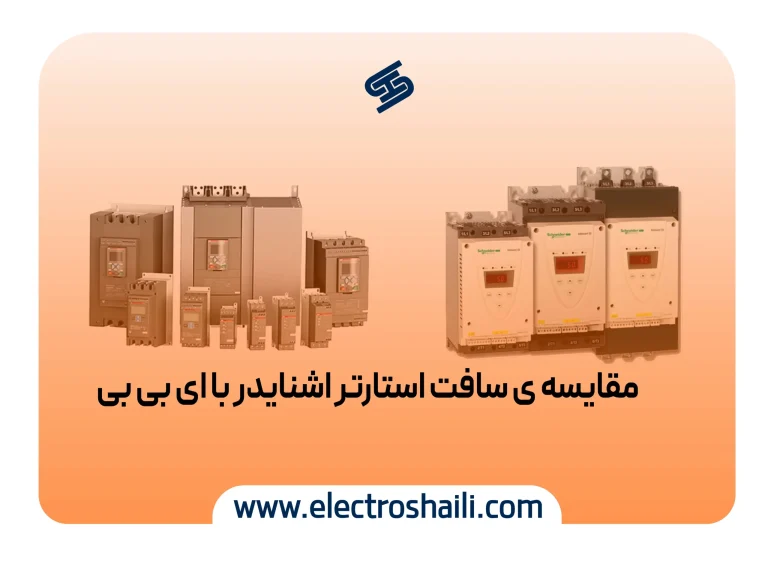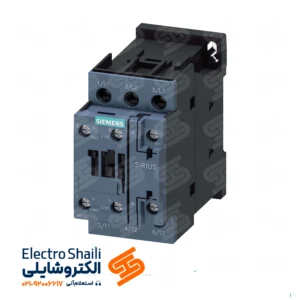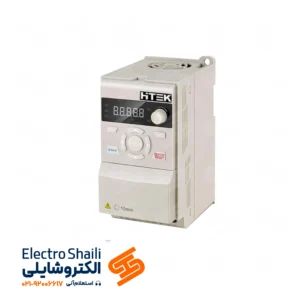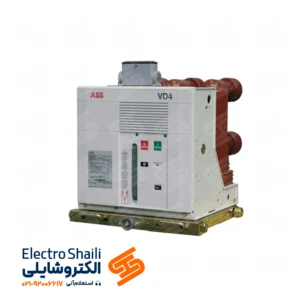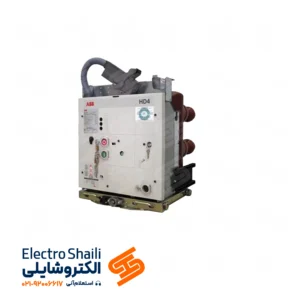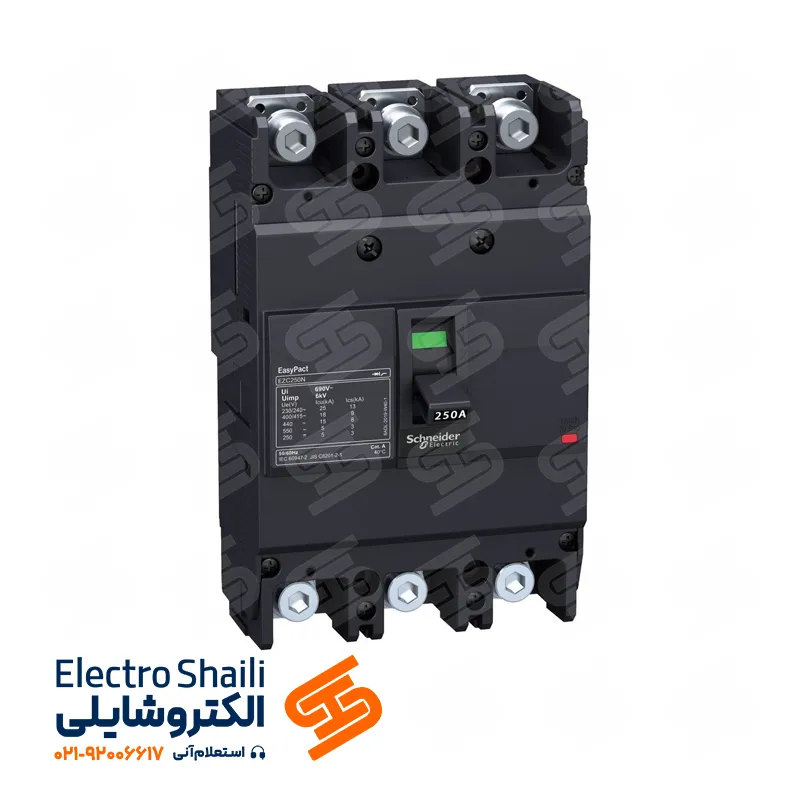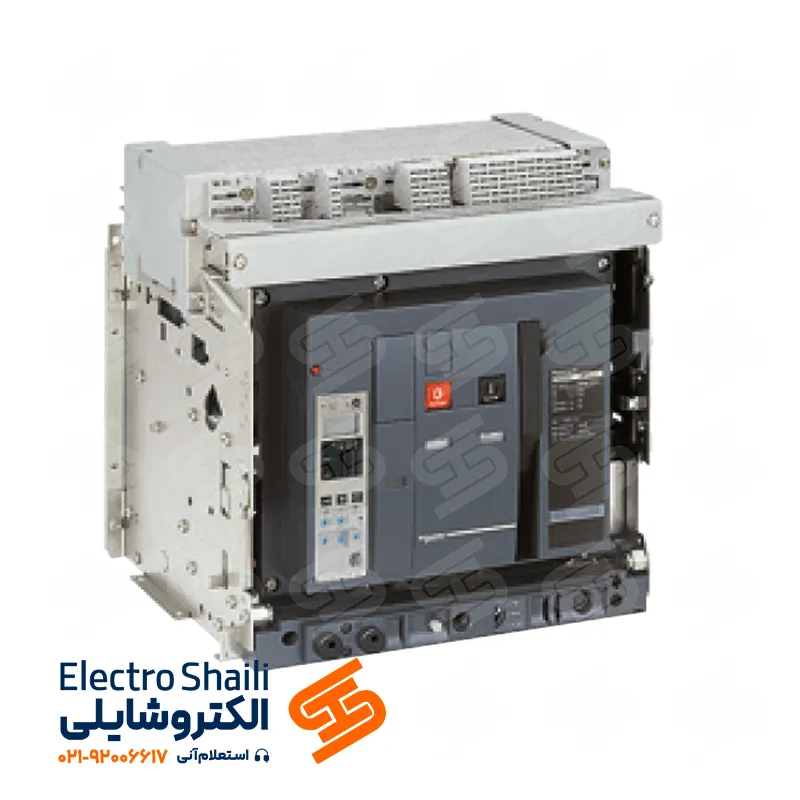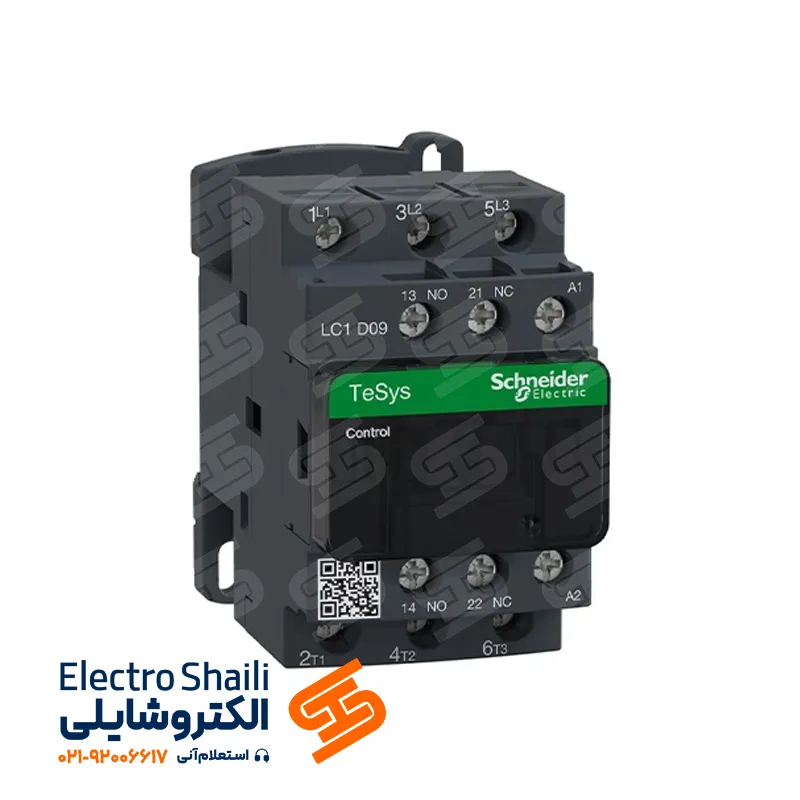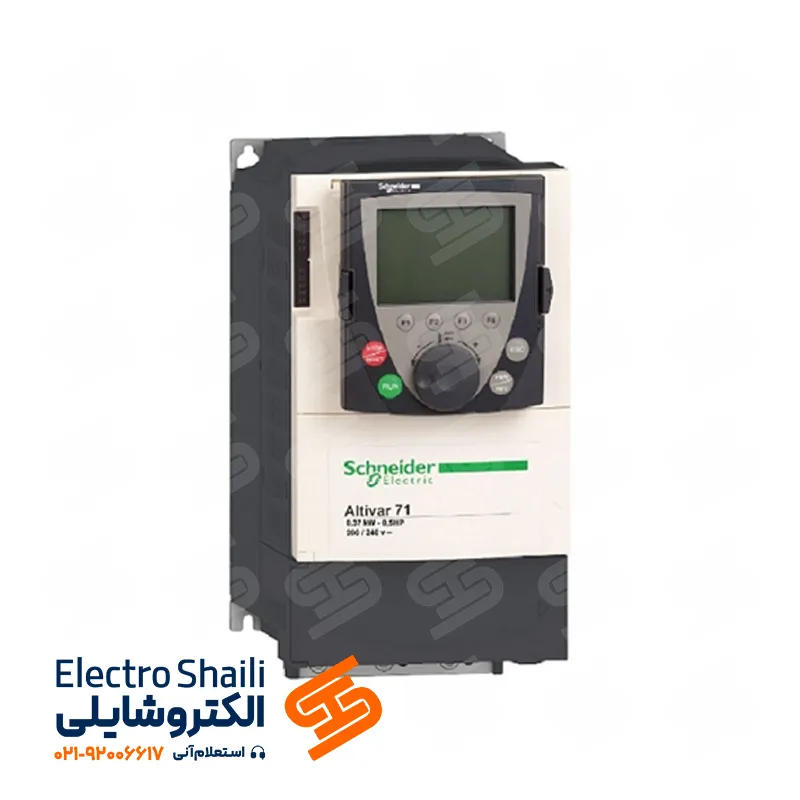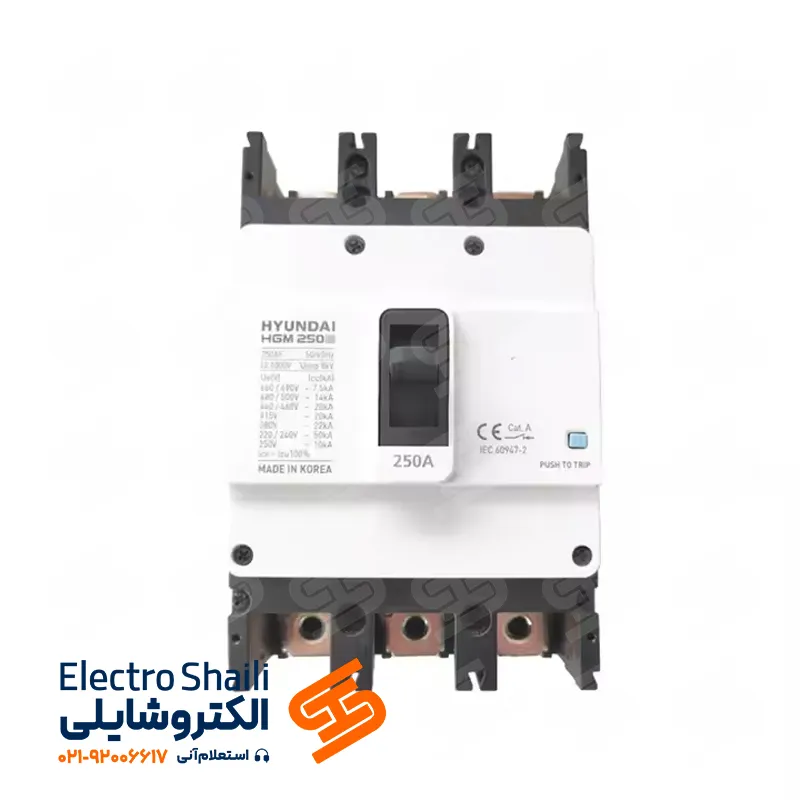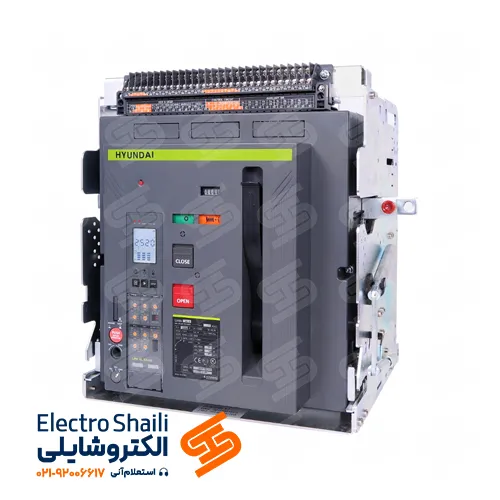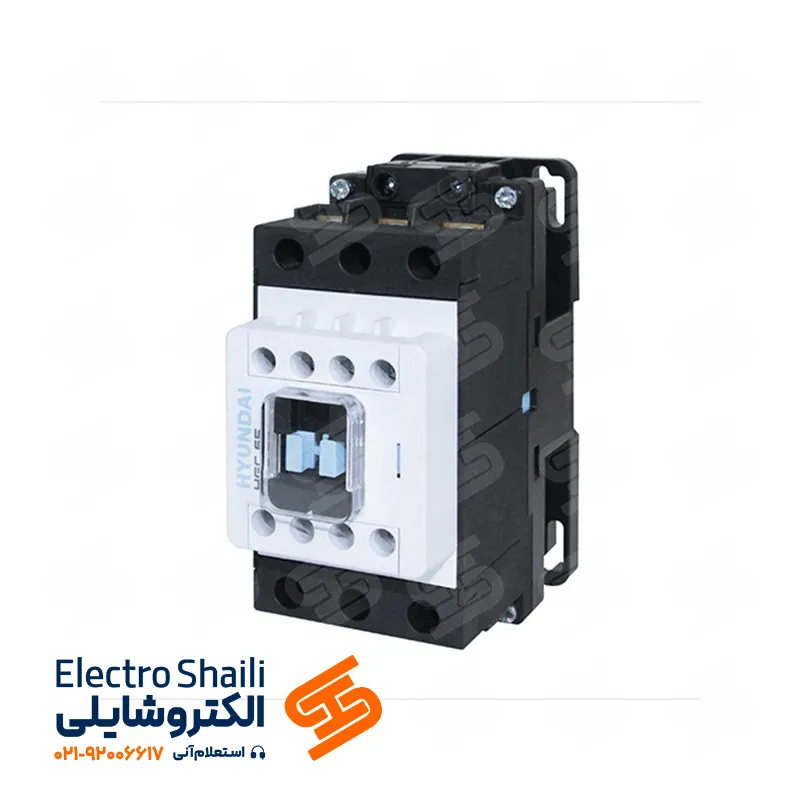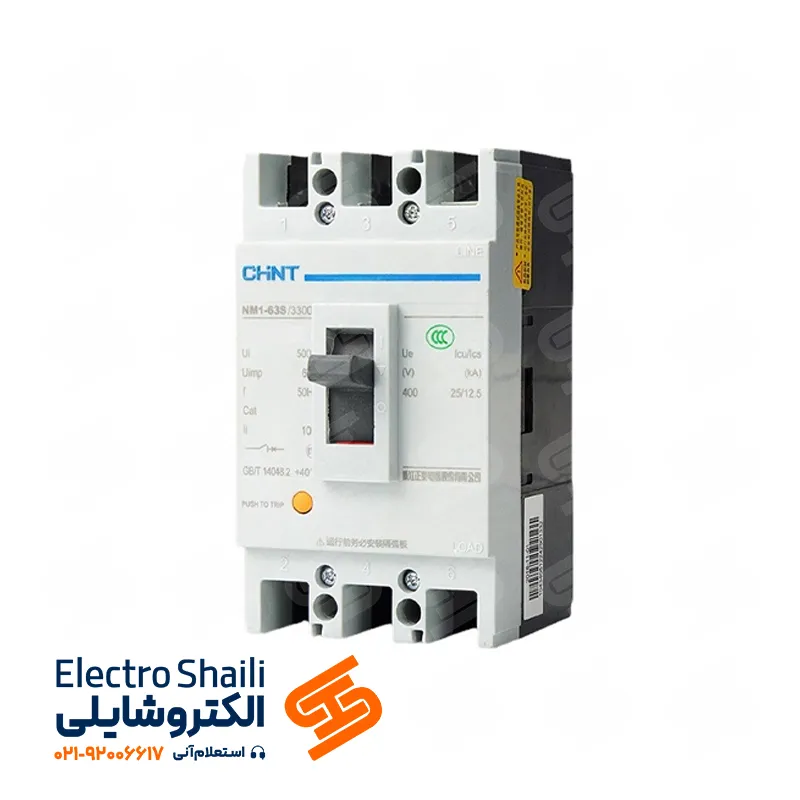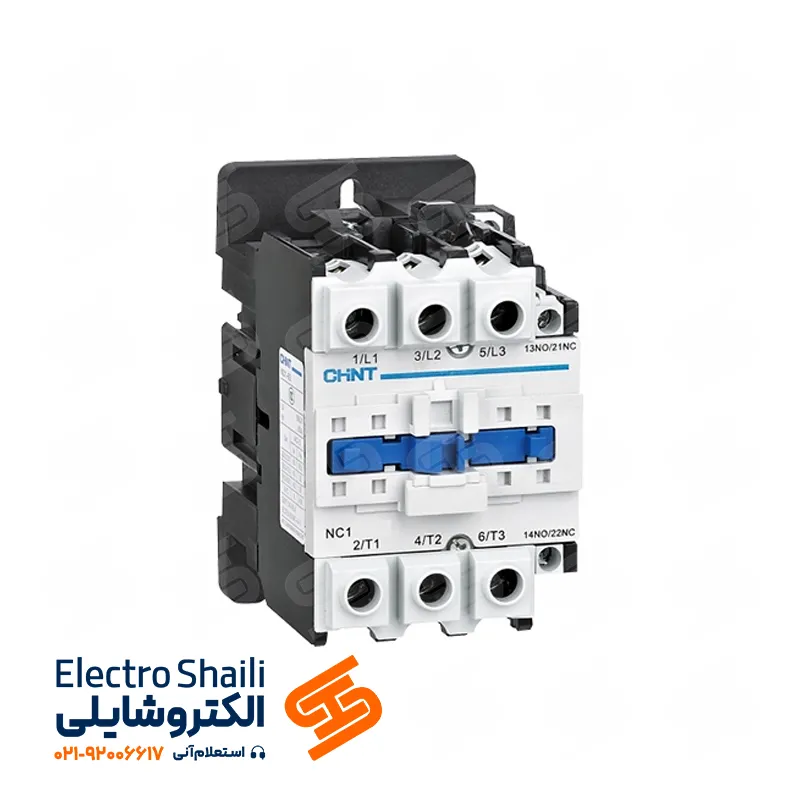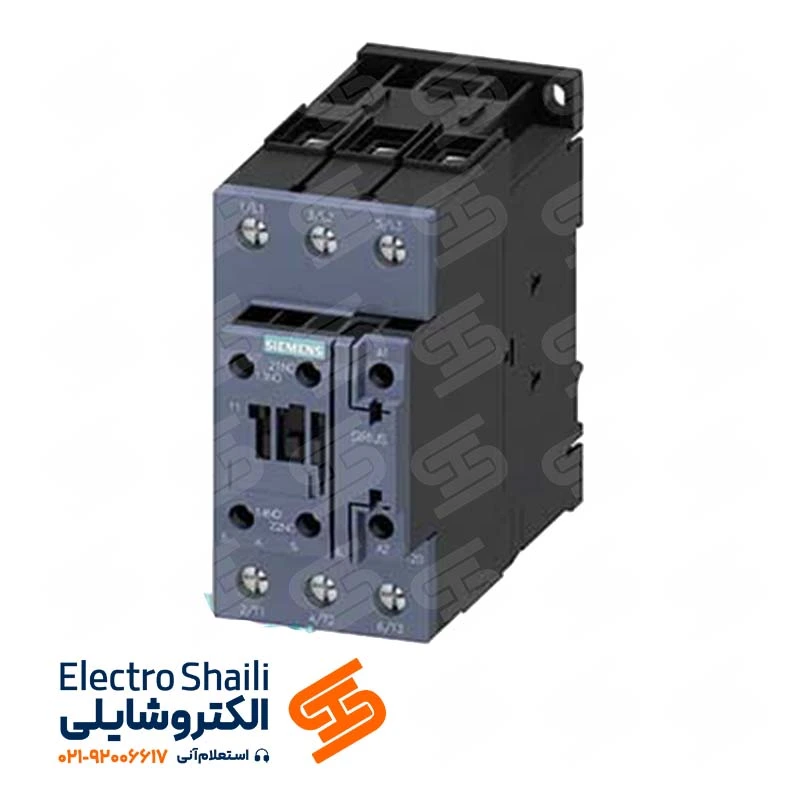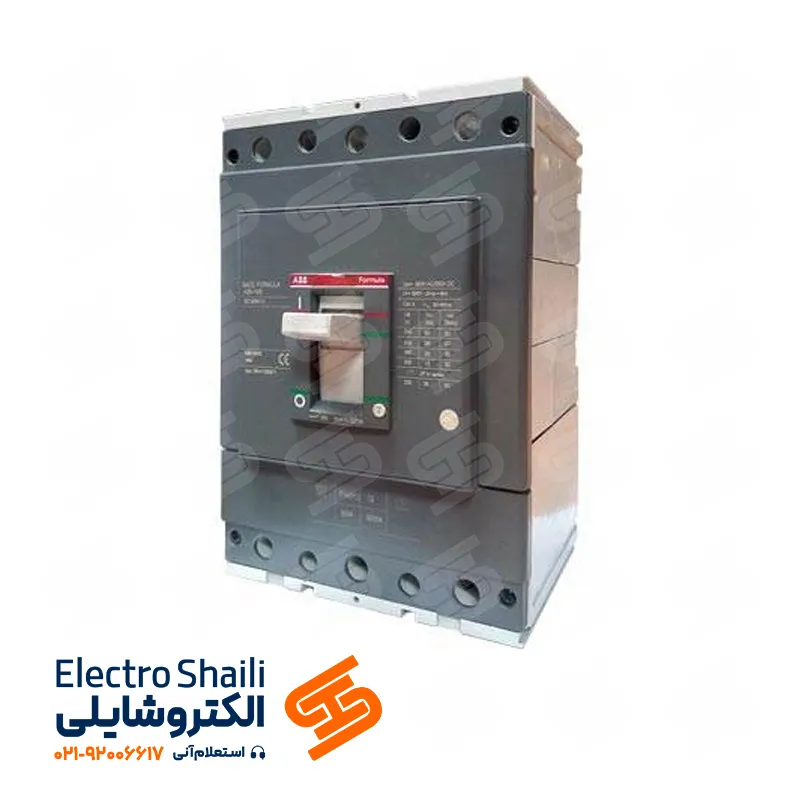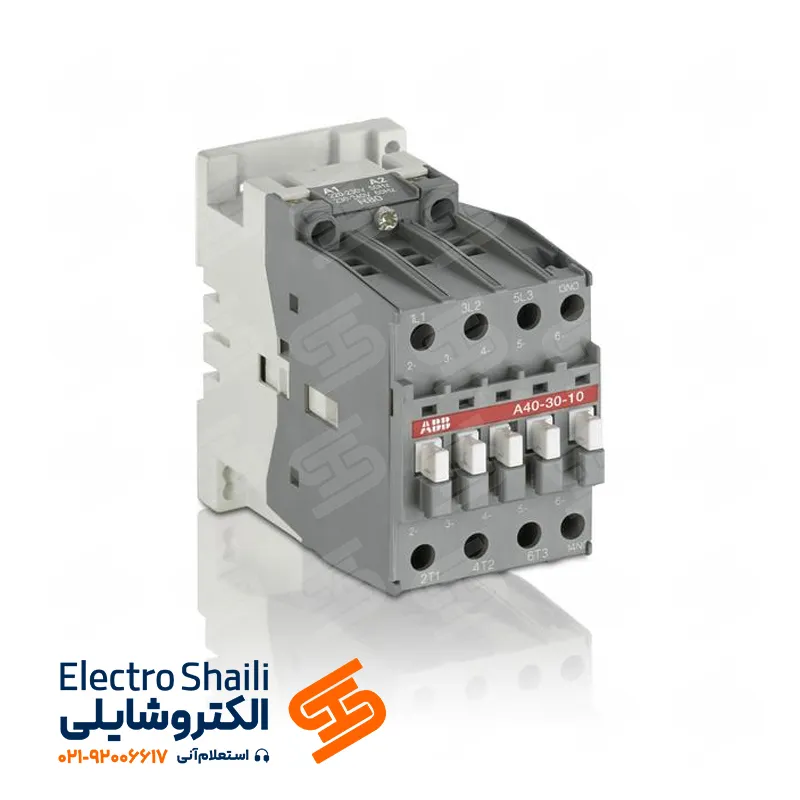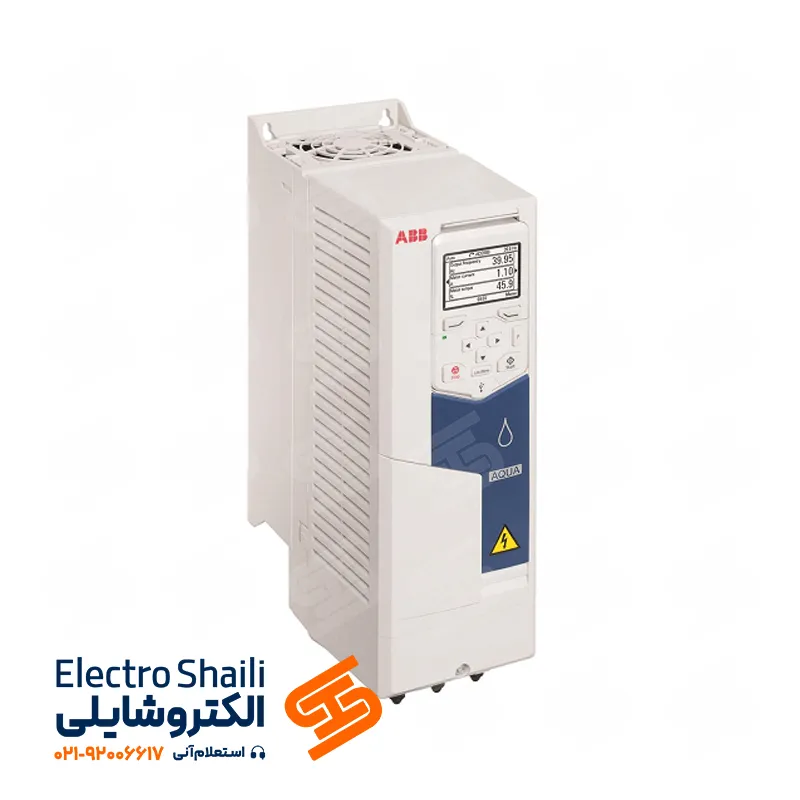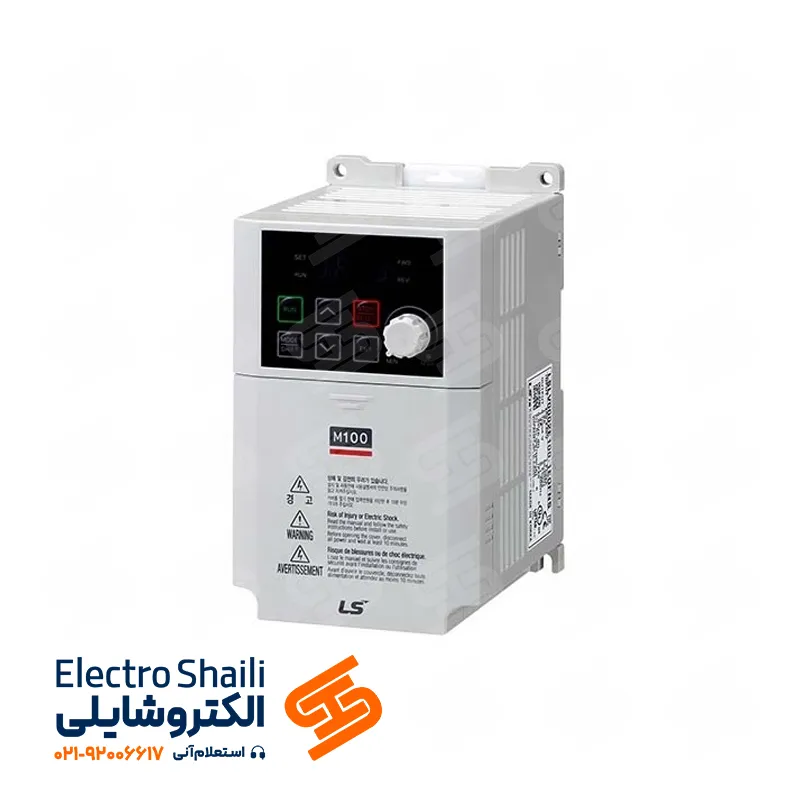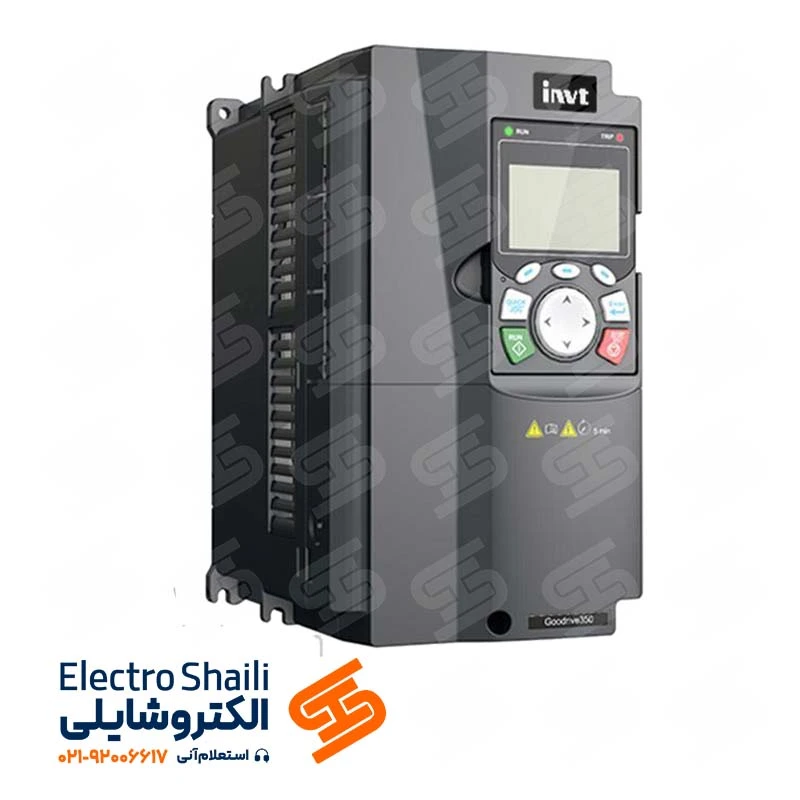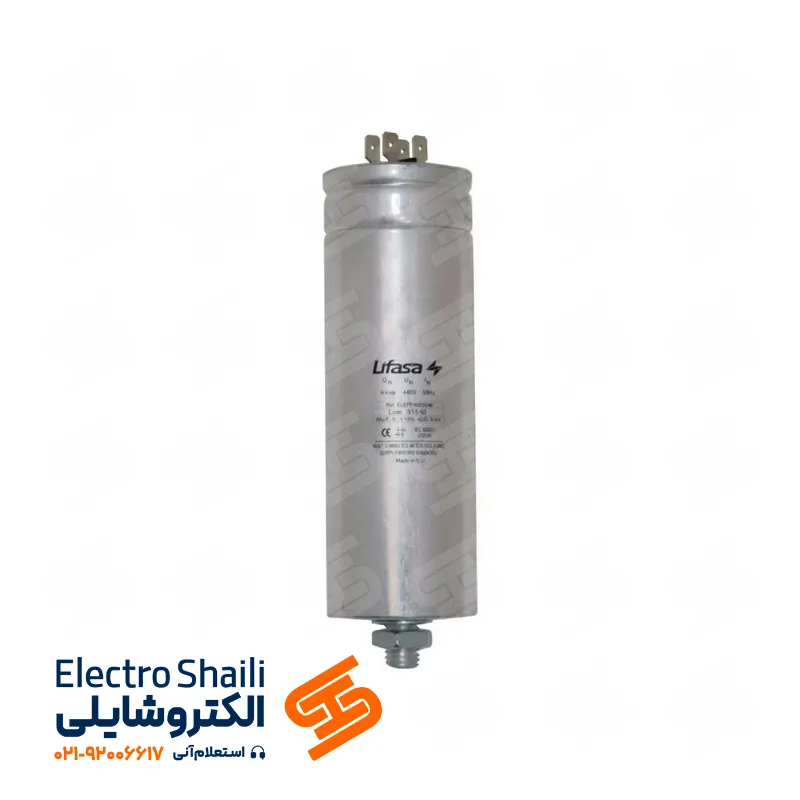Buy Hyundai Contactor From Iran
A Hyundai contactor is an electromechanical component used to control electrical current in electrical systems and devices. This component has electrical switches (contacts) that are controlled magnetically.
Hyundai contactors, with the expertise and technology of Hyundai, possess the following features and capabilities:
- High Power: Hyundai contactors are capable of withstanding high electrical currents, making them suitable for industrial and heavy-duty applications.
- Durability and Stability: These contactors are constructed using high-quality materials and advanced technology, providing them with greater durability and stability in harsh conditions and industrial environments.
- Reliable Control: Hyundai contactors ensure precise and reliable control of electrical currents. Utilizing advanced magnetic systems and electronic circuits, these components offer dependable performance.
- Optimal Design: In general, Hyundai contactors have a slim and compact design, facilitating easier installation and use.
In summary, Hyundai contactors are high-quality electronic and electrical components with versatile capabilities. They find applications in various industries, including the electrical industry, automotive, machinery, and industrial systems.
Contactor (Contactors):
Contactor is one of the industrial electrical equipment used to control electrical loads in power systems. Contactors can control electrical loads larger than the capacity of switches and relays, making them an essential component in industrial power systems.
Hyundai is also one of the top manufacturers of contactors globally, producing high-quality and high-capacity products in this field. Hyundai contactors, due to features such as long lifespan, high efficiency, low energy consumption, and suitability for harsh conditions, are suitable for many industrial applications.
Some applications of Hyundai contactors include:
- Control of Electric Motors: Hyundai contactors can be used to control electric motors in devices such as pumps, fans, compressors, etc.
- Control of Large Loads: For controlling large loads in industries such as steel, mining, cement, petrochemical, etc., Hyundai contactors are suitable.
- Use in Cooling Systems: Hyundai contactors can be used to control cooling systems in industrial devices.
- Control of Lighting Devices: Hyundai contactors can be employed to control lighting devices commonly used in theaters, auditoriums, and meeting halls.
Contactors are crucial electrical components used in various industrial applications, electrical devices, machinery, and vehicles. They are produced in various types and with different capacities to meet diverse industrial needs.
Hyundai Contactor:
The Hyundai contactor is considered one of the best types of contactors in the market. With its modern and reliable design, it has gained significant attention from industrial users. Some applications of the Hyundai contactor include:
- Use in Power Circuits
- Use in Lighting Systems and Industrial Automation
- Use in Cooling Systems
- Use in Industrial Machinery and Automotive Devices
Other features of the Hyundai contactor include low energy consumption, long lifespan, and the ability to operate in challenging conditions without requiring extensive maintenance. Additionally, this contactor has protection capabilities against fluctuations and unstable voltages.
Given that the Hyundai contactor is among the best and most reliable contactors in the market, using it in industrial devices and equipment is considered a smart choice.
Contactor:
A contactor, in the electrical and electronic industry, is an electromechanical component used as an electrical switch to control and maintain the flow of electric currents between two or more circuits.
Contactors are primarily used in motor control systems, power transmission lines, and switching operations, such as turning electrical devices on and off or adjusting voltage.
Contactors consist of three main parts: magnetic components to create attractive force between poles, contacts for establishing and breaking electrical connections between circuits, and the control section to manage the contactor’s operation.
Contactors usually have high voltage and current ratings, and for safety and optimal performance, they should be selected based on the specific requirements of their use.
Types and Series of Hyundai Contactors:
Hyundai Contactor Series U (UMC):
The U series of Hyundai contactors utilizes a modular design, allowing for the quick and easy installation of auxiliary contact blocks, timers, mechanical interlock blocks, etc. Hyundai UMC contactors provide convenience, economic advantages, and high credibility for various industrial control systems, industries, homes, etc. They are compatible with the IEC 60947-4-1 standard. (Source)
Hyundai UMC Contactor 9-100A:
- Operating voltage AC, DC
- Direct connection to the thermal relay
- Installation with screws and nuts and on a 35 mm DIN rail
- Quick and easy installation of accessories
- Ability to connect capacitors with an additional connection block
Hyundai UMC Contactor 115-800A:
- Universal working voltage AC, DC
- Easy coil control and replacement
- Compact size, durable frame, and lightweight
- Robust DC coil operation at any voltage
Accessories for Hyundai U Series (UMC) Contactors:
- Auxiliary Contact Block I UAB, UAL
- Mechanical Interlock Block I ULB
- Mutually Interlocking Mechanical Block I ULT
- Electronic Timer Block I UET
- Additional Power Module I URC, UCD
- Front Safety Cover I UMC_IC
Hyundai HG Series Contactor:
The new series of magnetic contactors, named HGs, was introduced in 2015 to replace the U series. These contactors are characterized by a modular design, allowing for the quick and easy installation of auxiliary contact blocks, timers, mechanical interlock blocks, etc.
Hyundai HG contactors provide comfort, economic advantages, and high credibility for various industrial control systems, industries, homes, etc. They are compatible with the IEC 60947-4-1 standard. (Source)
Hyundai HGC Contactor 9-100A:
- Operating voltage AC, DC
- Direct connection to the thermal relay
- Installation with screws and nuts and on a 35 mm DIN rail
- Quick and easy installation of accessories
- Ability to connect capacitors with an additional connection block
Hyundai HGC Contactor 115-800A:
- Universal working voltage AC, DC
- Easy coil control and replacement
- Compact size, durable frame, and lightweight
- Robust DC coil operation at any voltage
Accessories for HG Series Contactors:
- Overload Thermal Relay HGT
- Auxiliary Contact Block HGCTB, HGCSB
- Mechanical Interlock Block HGCLB
- Mutually Interlocking Mechanical Block HGCIU
- Electronic Timer Block HGCET
- Additional Power Module HGCRC, HGCCD
Advantages of Using Contactors:
- Power Control: Contactors allow users to precisely control electrical currents, ensuring sufficient power reaches sensitive equipment and devices.
- High Current Tolerance: Contactors are commonly used to control high electrical currents and can stably handle these currents for extended periods.
- Ability to Work with High Voltage: Contactors can operate with high voltages, providing assistance to large and sensitive equipment in various industries.
- Long Lifespan: Due to their stable structure and magnetic components, contactors have a significantly long lifespan.
- Safety: Contactors, with their ability to connect and disconnect electrical currents, provide a high level of safety for both equipment and users.
- Ease of Control and Connection: Using contactors makes it much easier to control and connect to other equipment and devices.
In conclusion, the use and purchase of contactors contribute to better performance and increased safety for equipment and industries.
Contactors Structure:
Contactors are composed of several essential parts, including:
- Frame: The contactor frame is usually made of metal and includes various sections that house the internal components of the contactor.
- Armature: The armature of the contactor is mechanically movable, and when the contactor is closed, the armature connects to other parts of the contactor, allowing electrical current to flow through.
- Contacts: The contactor includes a small set of metal wires that come close to each other when voltage is applied to the contactor, creating an electrical current in the circuit. In larger contactors, multiple contacts are arranged in parallel within the contactor.
- Connection Wires: Connection wires in the contactor are used to connect it to the electrical circuit and link it to other equipment and devices.
- Diaphragm: The diaphragm in the contactor is used to control the armature during the opening and closing of the contactor. The diaphragm is made of rubber or metal and moves mechanically during the contactor’s operation.
Electro Shaili is the leading supplier of various types of contactors, capacitor contactors, and thyristor contactors in Iran.
Difference Between Contactor and Relay:
While both contactors and relays are used for controlling electrical currents, there are differences between these two components:
- Current Capacity: Contactors are used to control high-capacity electrical currents (usually above 10 amps), whereas relays are mostly used for controlling low-capacity electrical currents (usually below 10 amps).
- Durability: Contactors are designed for industrial and permanent applications, offering a longer lifespan and greater durability. Relays, on the other hand, are designed for short-term and household applications, with a lower long-term durability.
- Operating State: Contactors, when in the off state, are stably open, while relays, in the off state, are stably closed.
- Control Capability: Contactors, in addition to controlling electrical currents, have a movable armature that allows them to control heavier loads. Relays are designed only for controlling electrical currents.
In summary, both contactors and relays are used for controlling electrical currents in electrical circuits, but they differ in practical applications.
Contactors’ Function:
Contactors are used to control and manage electrical currents in electrical circuits. The main function of contactors is to open and close electrical circuits in response to control signals. Generally, contactors are divided into two main sections: the control section and the power section, both playing crucial roles in controlling electrical currents.
In the control section, the contactor, upon receiving a control signal from the control system, opens and closes the contactor, controlling the power section. This section includes control terminals for connecting control wires to the contactor and control devices such as push buttons or sensors.
The power section, including power terminals for connecting power wires to the contactor, receives electrical current from the power source and, when the contactor is closed, sends the electrical current to the load (such as a motor). The primary goal of the power section is to manage electrical current, establish and interrupt connections in electrical circuits.
Therefore, contactors automatically open and close power section circuits, controlling electrical loads through control signals.
Purchase high-quality and reliable contactors from renowned brands such as Schneider, Siemens, Hyundai, Chint, and LS at Electro Shaili.
Where Are Contactors Used?
Contactors are widely used in industries and electrical systems. Some applications of contactors include:
- Motor Control: Contactors play a crucial role in controlling motors, providing the necessary current and voltage to start large motors.
- Automotive Industry: Contactors are used in the electrical systems of vehicles as power switches to control electrical current in circuits.
- Manufacturing Industry: Contactors are used for controlling connections and disconnections in electrical circuits, for example, in production lines or quality control and welding machines.
- Lighting Systems: Contactors are employed to control lighting in buildings, commercial centers, and recreational facilities.
- Cooling Systems: In cooling systems, contactors control compressors and cooling pumps.
- Safety Systems: Contactors are used in safety systems to cut off electrical current in case of hazards, such as circuit breakage.
- Water and Wastewater Industry: Contactors control pumps and other devices used for the distribution and collection of water in the water and wastewater industry.
- Heating, Ventilation, and Air Conditioning (HVAC) Systems: Contactors are used to control motors, pumps, and other devices in HVAC systems.
- Safety Lighting Systems: In safety lighting systems, contactors control lighting in buildings, commercial centers, and recreational facilities.
In summary, contactors, including Hyundai contactors, are used in various industries and electrical systems to control electrical currents and manage different electrical and electronic devices. These devices have gained significant attention from various industries due to features such as high power tolerance, precision, control capability, stability, safety, and long lifespan.
Contactor Terminal:
A contactor terminal refers to a part of the contactor that includes connection points to the electrical circuit, as well as input and output terminals. In essence, the contactor terminal serves as a physical connector between two different electrical circuits in the power circuit.
Contactors’ terminals are typically made of materials such as brass, aluminum, or copper and have bases that are embedded inside the contactor. The terminals of the contactor are often equipped with different numbers, depending on the type of contactor and its power consumption.
Contactors’ terminals are used to connect input and output wires. In other words, electrical wires are connected to the power circuit through the contactor terminal. The contactor terminal ensures that connections between different wires in the electrical circuit are made directly and safely, preventing incorrect and hazardous connections.
Auxiliary Contact:
An auxiliary contact is a type of contactor used for controlling and establishing auxiliary connections in electrical and communication circuits. These contacts typically have terminal bases for connecting electrical wires, and the connections they establish can vary depending on their location and application.
Auxiliary contacts can be of two types: NO (Normally Open) and NC (Normally Closed). In NO auxiliary contacts, there is no electrical current flow when there is no power, whereas in NC auxiliary contacts, the connection is established when there is no electrical current.
Auxiliary contacts are used to control electrical and communication circuits. They can be employed for creating auxiliary connections, generating alert signals, limiting electrical current, establishing safety circuits, and determining the status of electrical devices. Auxiliary contacts find applications in the electrical industry, industrial automation, and control systems, as well as precision instruments.
Bimetal and Its Connection to Contactor:
Bimetal: Bimetal is a composite metal consisting of two layers of metal with different thicknesses that are seamlessly combined. It finds application in various electronic and electrical industries, including the manufacturing of electrical components such as contactors.
In contactors utilizing bimetal, two layers of metal with different thicknesses are soldered together. When an electrical current passes through the center of the contactor, it generates high temperature, causing the thicker layer of bimetal to expand more. This expansion leads to the bending of the bimetal in areas with less thickness, resulting in the opening and closing of the contactor.
Bimetal in Contactors: Bimetal is used in contactors as a vital component in the process of opening and closing the contactor. Such contactors are known as bimetallic contactors and are used in industrial and household electricity for controlling electrical devices.
Contactor Rated Current:
Contactor Rated Current: Contactor rated current refers to a specific electrical current that the contactor is capable of controlling. This rated current is defined based on international standards and is measured in Amperes (Amps).
For example, if the contactor’s rated current is 20 Amps, it means that the contactor can control a maximum electrical current of 20 Amps. If the electrical current exceeds this value, the contactor may get damaged.
The rated current of a contactor may vary depending on its type. For instance, contactors used to control household devices have a lower rated current, while those used in industrial power systems have a higher rated current.
Contactor Rated Voltage:
Contactor Rated Voltage: Contactor rated voltage refers to a specific electrical voltage that the contactor is capable of controlling. This rated voltage is defined based on international standards and is measured in Volts.
For example, if the contactor’s rated voltage is 220 Volts, it means that the contactor can control a maximum electrical voltage of 220 Volts. If the electrical voltage exceeds this value, the contactor may get damaged.
Similar to the rated current, the rated voltage of a contactor may vary depending on its type. Contactors used to control household devices typically have a lower rated voltage, while those used in industrial electrical equipment have a higher rated voltage.
Structure and Operation of Hyundai Contactors:
Introduction: Contactors are composed of electronic and electrical components, used to control high-power or thermal systems, as well as current and voltage in electrical systems. Contactors are divided into two main parts: the control section and the power section. The control section manages the electrical circuit of the contactor, while the power section controls the current and voltage in the electrical circuit.
Hyundai Contactors: Hyundai contactors, like other contactors, have two main sections: the control section and the power section. The control section includes an electromagnet that is used to activate and deactivate the power section of the contactor in response to a control signal. The power section of the contactor contains a switch controlled by the control section, generating high power in the electrical circuit.
Applications of Hyundai Contactors: Hyundai contactors are suitable for use in electrical circuits with high current and voltage. They are used to control motors and industrial and automotive mechanical components. For example, Hyundai contactors can be used to control induction motors, DC motors, electric brakes, and electric aircraft. They find applications in various industries such as electrical, automotive, construction, and more.
Structure of Hyundai Contactors: The structure of Hyundai contactors typically includes a magnet and a switching system. The magnet is used to activate the switching system of the contactor. The switching system consists of a series of contacts that open and close in response to the magnet’s activation. Opening and closing these contacts can be used to control electrical loads and protect electrical equipment.
Operation of Hyundai Contactors: When electrical current enters the contactor, the magnet is activated, and the switching system of the contactor opens. This action enables the interruption and connection of the electrical load. Additionally, in case of issues such as increased current or voltage, the contactor can automatically disconnect, protecting electrical equipment from potential damage.
Components of Hyundai Contactors: Hyundai contactors mainly consist of three main parts: the wiring section, the replaceable section, and the section connectable to other system components.
- Wiring Section: This section includes the contactors and the housing above them. In the contactors section, electrical poles are created for the current, which, under pressure, approach each other and connect through electrical contact. In the housing section, the contactor is selected and executed based on the type and voltage of the system.
- Replaceable Section: This section includes thermal relays, electronic relays, and other replaceable components known as contactors. These components are used to protect the contactor against excessive currents and to control the current.
- Connectable Section to Other System Components: In this section, the contactor is connected to other system components such as current components, power supply switches, and measuring devices.
Applications of Hyundai Contactors: Hyundai contactors are used in various applications such as industrial automation, motor control, power distribution stations, stable power supply, and load control. Due to their strong performance, reliable structure, and high control capabilities, Hyundai contactors are among the most widely used and popular contactors in the industry.
Installation and Commissioning of Hyundai Contactor:
Installation and Commissioning: The installation and commissioning of Hyundai contactors require precision and technical knowledge and should be performed by specialized experts. However, in general, the process is as follows:
- Contact Selection: Calculate the desired load first to determine which contactor is suitable for your needs.
- Contactor Installation: After selecting the contactor, place it inside the enclosure and secure it with screws and bolts.
- Electrical Connections: In the next step, establish the electrical connections of the contactor using suitable cables. If you are unable to perform this step correctly, it is advisable to consult specialized professionals.
- Contactor Adjustments: Adjust the contactor settings for appropriate use.
- Commissioning: After completing the above steps, commission the contactor and carefully check its performance.
It should be noted that the installation and commissioning of Hyundai contactors should be done professionally and in accordance with safety principles. If you are unable to perform these steps correctly, it is recommended to consult specialized professionals.
Differences of Hyundai Contactor from Other Types:
Hyundai Contactor Differences: Contactors serve as control electronic components in the industry, with each contactor having different structures and capabilities used based on specific industrial needs.
Hyundai contactors, as examples of AC contactors, are highly beneficial for industrial applications. The differences of Hyundai contactors from other types are as follows:
- Higher Resistance: Hyundai contactors typically have higher resistance to shocks and vibrations, resulting in a longer lifespan.
- High Current Tolerance: Hyundai contactors can tolerate higher currents, making them suitable for systems with heavy loads.
- Smaller Dimensions: These contactors have smaller dimensions compared to other types, making their installation and use simpler.
- Modular Capability: Many Hyundai contactors have modular capabilities, allowing additional modules to be added for further expansion of their features.
- Lower Cost: Due to their smaller dimensions, Hyundai contactors have lower power consumption, leading to reduced costs.
Advantages and Disadvantages of Using Hyundai Contactors:
Advantages:
- Ability to work with high pressure
- Simple and practical structure
- Longer lifespan compared to some other contactors
- Ability to operate in various weather conditions and for different loads
- Reliable and stable performance
- Ability to work with three-phase power
Disadvantages:
- Higher cost compared to some other contactors
- Larger dimensions compared to some other contactors
- Requires proper care and maintenance for long-term preservation
Considering the mentioned advantages and disadvantages, the use of Hyundai contactors can be suitable depending on the specific needs and conditions of each user.
Components of Hyundai Contactor and the Function of Each Component:
A Hyundai contactor consists of several components, each playing a crucial role in its operation. The components of a Hyundai contactor include:
- Enclosure: This part of the Hyundai contactor contains the pressure keys and their replaceable and detachable capabilities. It is designed for easy key replacement and detaching the contactor if repairs are needed.
- Contact: This part of the contactor includes the main components, namely the armature, coil, and contact strips. In the contactor’s operation, the contact strips are influenced by the electric field of the coil voltage. These electrical changes stimulate the contact strips, resulting in the closure or opening of the contacts.
- Electrical Wires: Electrical wires are used to connect the contactor to the electrical system and transmit electrical current to the contactor.
The advantages and disadvantages of Hyundai contactors can be examined based on the performance of each component. In general, some of the advantages and disadvantages of Hyundai contactors include:
Advantages:
- Very stable and durable, resistant to physical shocks and vibrations.
- Equipped with a single relay with interchangeable contacts, offering high flexibility.
- Cost-effective and widely used in various industrial electrical systems.
Disadvantages:
- Higher cost compared to some other contactors.
- Larger dimensions compared to some other contactors.
- Requires proper care and maintenance for long-term preservation.
Troubleshooting and Repairing Hyundai Contactor:
For troubleshooting and repairing a Hyundai contactor, the following steps can be followed:
- Inspect External Parts: Examine the external parts of the contactor to identify potential issues. Carefully check internal parts and use a multimeter to determine voltage and current if electricity is present.
- Inspect Internal Parts: Examine internal parts, including the coil, contacts, and commands, to identify the cause of the issue. Use a multimeter to determine voltage and current in this stage.
- Replace Faulty Components: If there are faults in internal components, replace the defective parts. This may involve replacing the coil, contacts, and commands.
- Repair Contactor Parts: If contactor components are not damaged, various parts may still need repair. For example, if high current causes contact burning, the contacts can be repaired.
In general, the use of Hyundai contactors has both advantages and disadvantages, and careful attention and expertise are required for troubleshooting and repair.
Applications of Hyundai Contactor in Various Industries:
Hyundai contactors are used in various industries due to their capabilities. Some applications of Hyundai contactors in different industries include:
- Automotive Industry: Used to control electric motors and vehicle drive systems.
- Petrochemical Industry: Utilized for controlling pumping equipment, compressors, and heating equipment in the petrochemical industry.
- Steel Industry: Applied for controlling and managing thermal and electrical systems in steel industries.
- Mining Industry: Employed for controlling electric motors in mining equipment such as conveyors and water pumps.
- Oil and Gas Industry: Used to control heating and electrical equipment in power plants and oil and gas fields.
- Food Industry: Applied in the food industry to control production machinery such as dough machines, ovens, refrigerators, pumps, and various industrial machines.
In general, Hyundai contactors are used in all industries that require control and management of electrical loads.
The Necessity of Using Hyundai Contactor in Industrial Electrical Systems:
The use of Hyundai contactors in industrial electrical systems is essential, and there are numerous reasons for this, including:
- Load Management: Hyundai contactors act as powerful switches, efficiently managing electrical loads. They are particularly useful in large and complex industrial systems for controlling and managing loads.
- Equipment Protection: By using Hyundai contactors, electrical equipment and devices are protected against increased current and voltage in electrical circuits. For example, Hyundai contactors can be used to protect electric motors requiring high current.
- Cost Savings: The use of Hyundai contactors reduces the costs of electrical systems. With this tool, you can control electrical current and automatically disconnect and reconnect it. This results in energy cost savings and reduced maintenance costs for machinery.
- Increased Equipment Lifespan: The use of Hyundai contactors increases the lifespan of electrical equipment. Acting as a powerful switch, this device efficiently manages load currents, contributing to a longer lifespan for electrical equipment.
In conclusion, Hyundai contactors play a crucial role in various industries, providing efficient load management, equipment protection, cost savings, and increased equipment lifespan in industrial electrical systems.
Standards Related to Hyundai Contactor and Quality Testing and Confirmation:
Standards related to Hyundai contactors include:
- IEC 60947 Standard: This standard specifies the requirements for electrical contactors to be used in industrial electrical systems.
- UL 508 Standard: This standard establishes safety requirements for industrial electrical products. Hyundai uses this standard for quality confirmation of its products.
- CE Standard: This standard sets safety requirements for products sold in the European market. Hyundai utilizes this standard for quality confirmation.
- CSA Standard: This standard defines safety requirements for industrial electrical products in Canada. Hyundai also uses this standard for quality confirmation.
For testing and confirming the quality of Hyundai contactors, the company employs advanced testing equipment and measurement tools. These include pressure testers, insulation testers, voltmeters, and continuity testers. In these tests, the performance of the contactor under various conditions such as temperature, pressure, voltage, and current is examined. Hyundai’s maintenance and repair specialists, equipped with experience and skills, are capable of troubleshooting and repairing contactors.
Frequently Asked Questions:
1. What is a contactor, and what are its applications?
Contactors are electrical devices used to control electrical current in both large and small systems. They are commonly employed in power circuits, electrical distribution lines, railway systems, and various industries.
2. Why should Hyundai contactors be chosen?
Hyundai contactors are recognized for their high build quality, optimal performance, and outstanding durability. They offer a diverse range of products that can meet a wide spectrum of needs, making Hyundai a reputable brand in the electronics industry.
3. How can I order a Hyundai contactor?
To order a Hyundai contactor, you can visit our website and select the desired product. Then, provide the specifications of your order to ElectroShield’s sales representatives. Our sales team is always ready to answer your questions and guide you in selecting the most suitable contactor.
4. Is a warranty provided for Hyundai contactors?
Yes, all Hyundai contactors come with a valid warranty, and the duration depends on the type of product. We assure our customers that we supply genuine and high-quality Hyundai products, and in case of any issues, we will provide warranty and after-sales services.
